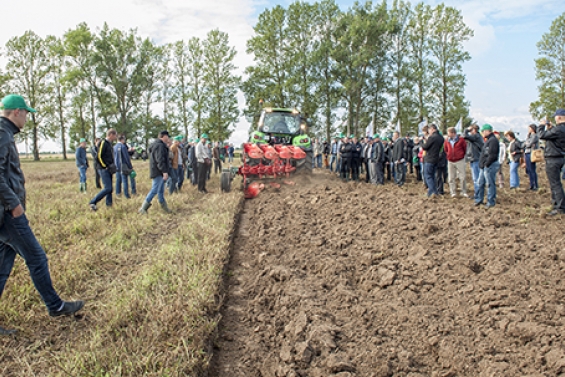Agriculture – one of the most important effective economy part. The most important objective of modern agriculture – to ensure country‘s needs for food and raw food products. However, the increasing intensity of agriculture sector in most cases is related to ecological risks which arise from the reducing soil fertility. Agricultural science progress can also be partly related with ecosystem‘s destruction, which as a result in some countries cause new agricultural forms. By giving up using chemical plant protection products and using not enough of alternative protection products tend to cause spread of weeds, pests and diseases, which put food products at risk. Therefore, it is essential to create a direction in agricultural science development that could be effective and and would ensure long-term sustainability of quality food products and would be environmental friendly. Such technologies have been created more than 30 years ago and are named biological agricultural technologies.
Moving towards biological agricultural technologies aiming to restore natural soil fertility and increase plants‘ effectiveness by improving production quality as well as installing energy saving technologies. One of the objectives which arise from implementing new technologies – to create attractive conditions for business in order to make them reality national support is essential and both investor and agricultural groups have to participate. By implementing biological agricultural technologies everyone will notice that there is nothing new – only optimisation of well-known technological processes. Implementation of these technologies require preserve environment, optimise plant rotation, install accurate seeding and fertilising technologies, reduce yield losses and minimise soil cultivation.
The distinction of precise agriculture and biological soil technologies – significance of landscape, agrochemical soil testing and plant productivity forecasting. This is a complex higher agricultural systems‘ management education system, which involve geographical IT systems, plant productivity and soil quality assessment and biological fertilisers‘ application technologies.
Implementation of biological agricultural technology brings the following benefits: optimises soil moisture and gas balance, protects soil from erosion, expand optimal seeding time as the soil will not have to be levelled out or prepared with other mechanisms.
The only disadvantage of biological agricultural technologies – starting capital for agricultural equipment, although many farmers already have it, but it requires consistent usage.
Nowadays farmers’ missions should be: the creation of suitable growth conditions and the maintenance of ecological soil fertility. Soil cannot become the hostage of intensive agriculture. It has been thought that soil fertility can be increased, but intensive soil preparation, fertilisers and pesticides started to reduce it. Intensively growing plant cultures also had a significant part in soil deterioration. It seems that each element should have a positive influence on a soil, however by combining them begins soil fertility destruction process. Scientists calculated that the mass of soil microorganisms, bacteria, mushrooms and other living soil organisms at some point constituted 10 t ha-1. Even though the soil biota has been constantly restoring, but the average mass averages at 1 – 2 t ha-1. It means that it is almost gone as does not get enough nutrients and by carrying our agricultural activity we take our more from the soil than give to it. By harvesting in some cases, we provide the soil with around 3,0 t ha-1 of dry materials, which normally should be 8,0 – 10,0 t ha-1.
One solution to this problem – optimised plant rotation and left out plant remains on the soil. Most importantly – we already have plenty of experience and resources.

